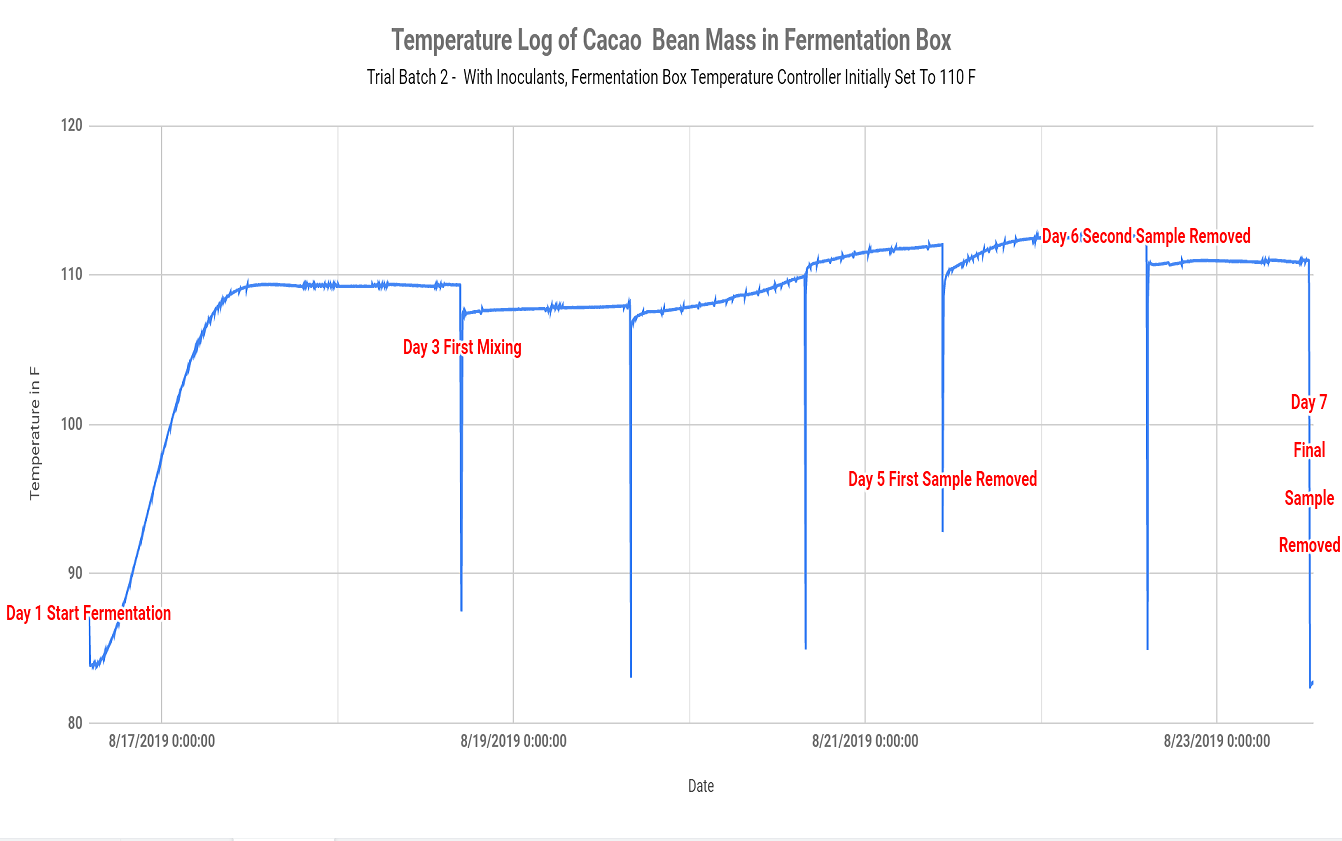
Fermentation and Drying Trials
We wanted to see if we could apply what we learned from Dr. Nat Bletter in Hawaii and produce our first fermented and dried cacao beans in the Philippines. It is known that you need a big volume of wet cacao beans (some people say at least 300 kg) to generate the ideal maximum heat (around 120°F) for good fermentation to occur. There is, however, a way around the big volume requirement and it is with the use of temperature control and fermentation starters or inoculants.
Our fermentation batch size was only 30 kg of wet beans. We ran two batches - one using starters and another not using starters. We used a temperature controller for both batches. We placed our fermentation box inside an enclosed styrofoam container with an incandescent light bulb inside. The bulb turns on when the temperature goes down below 110°F. A temperature probe with Bluetooth was inserted in the middle of the ferment to monitor ferment temperature. The beans were only first mixed after two days of fermentation, but then daily thereafter. We began doing cut tests starting day 5 and moved daily samples for drying. The beans were dried down to 6% moisture level and a 100 bean cut test was done to determine the quality of the fermented beans. The beans were finally processed and made into chocolate bars for taste tests.
Our results showed that the use of fermentation starters helped to produce better fermented beans and better tasting chocolate. The beans from the batch using fermentation starters were generally reddish in color and had a vinegary smell. There is a slight fruity flavor when you taste the raw bean.
This exercise gave us a good experience and insight into the multitude of variables that come into play in cacao bean fermentation and drying.

We bought ripe cacao pods from Ka Ino's farm and rested them for 5 days before opening.
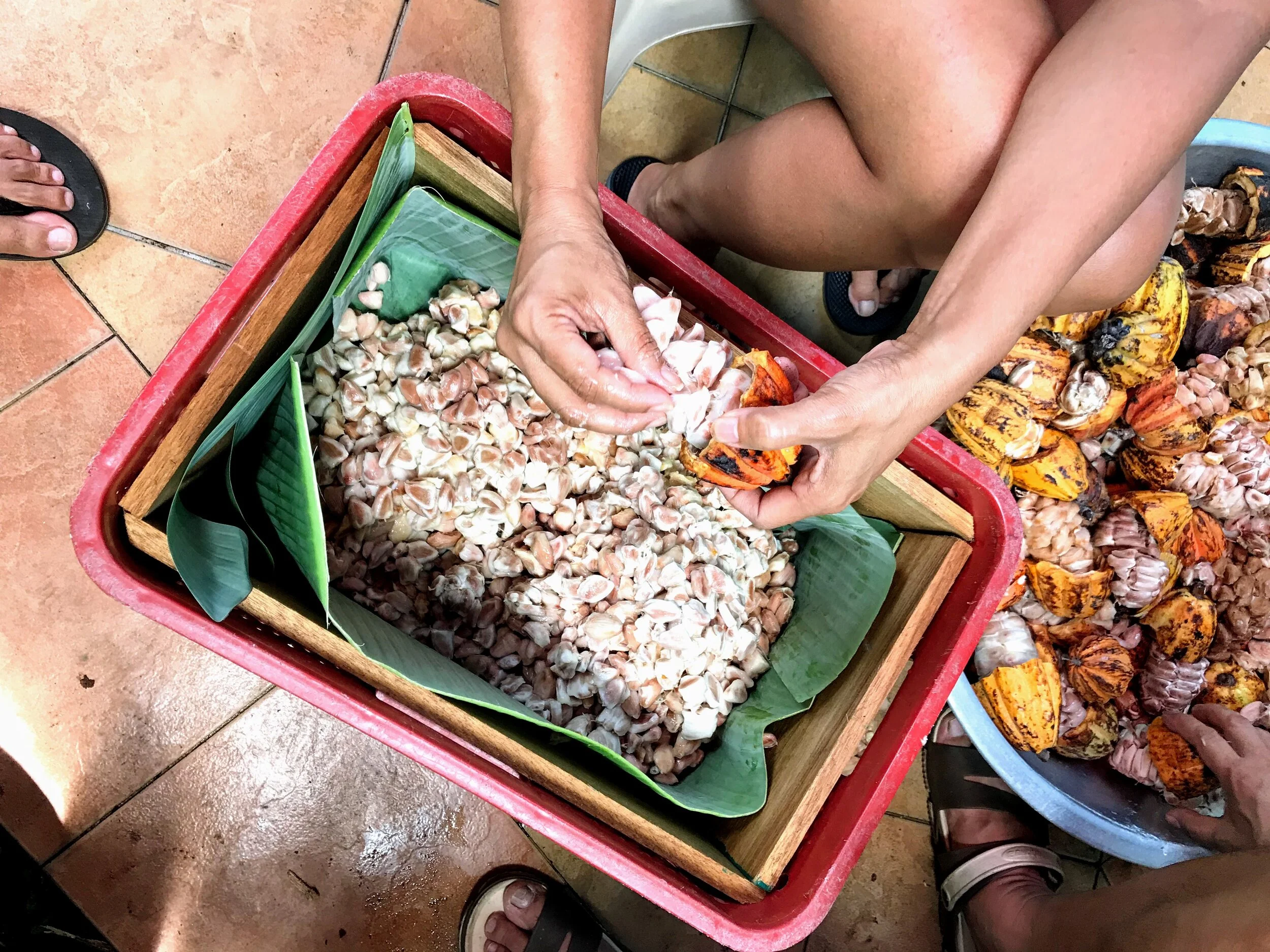
The rested pods were opened and the beans inside were placed in a plastic container lined with wood and banana leaves.
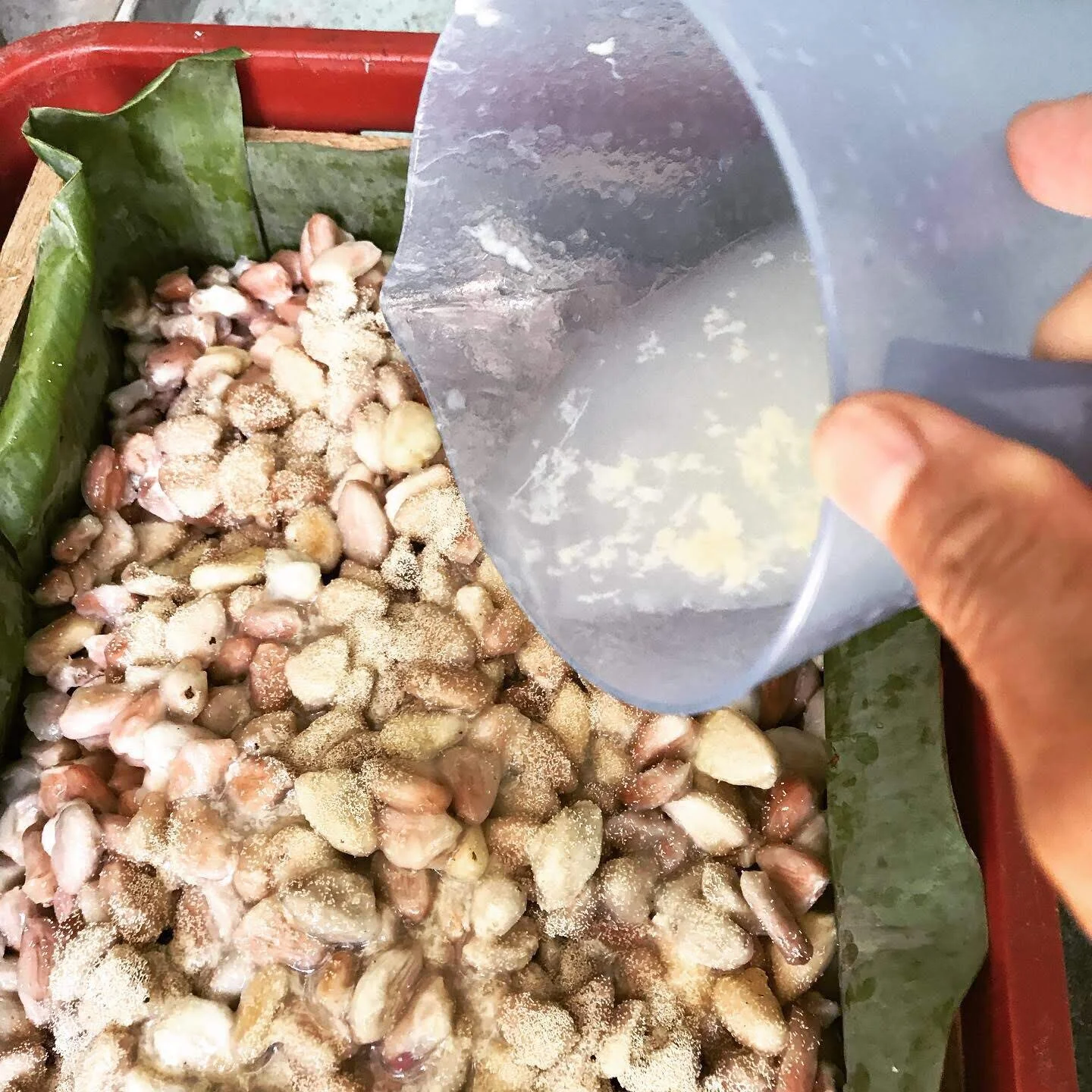
Fermentation starters were added to the wet beans. They include commercial bread yeast, nata de coco starter, sugar and pod skin.
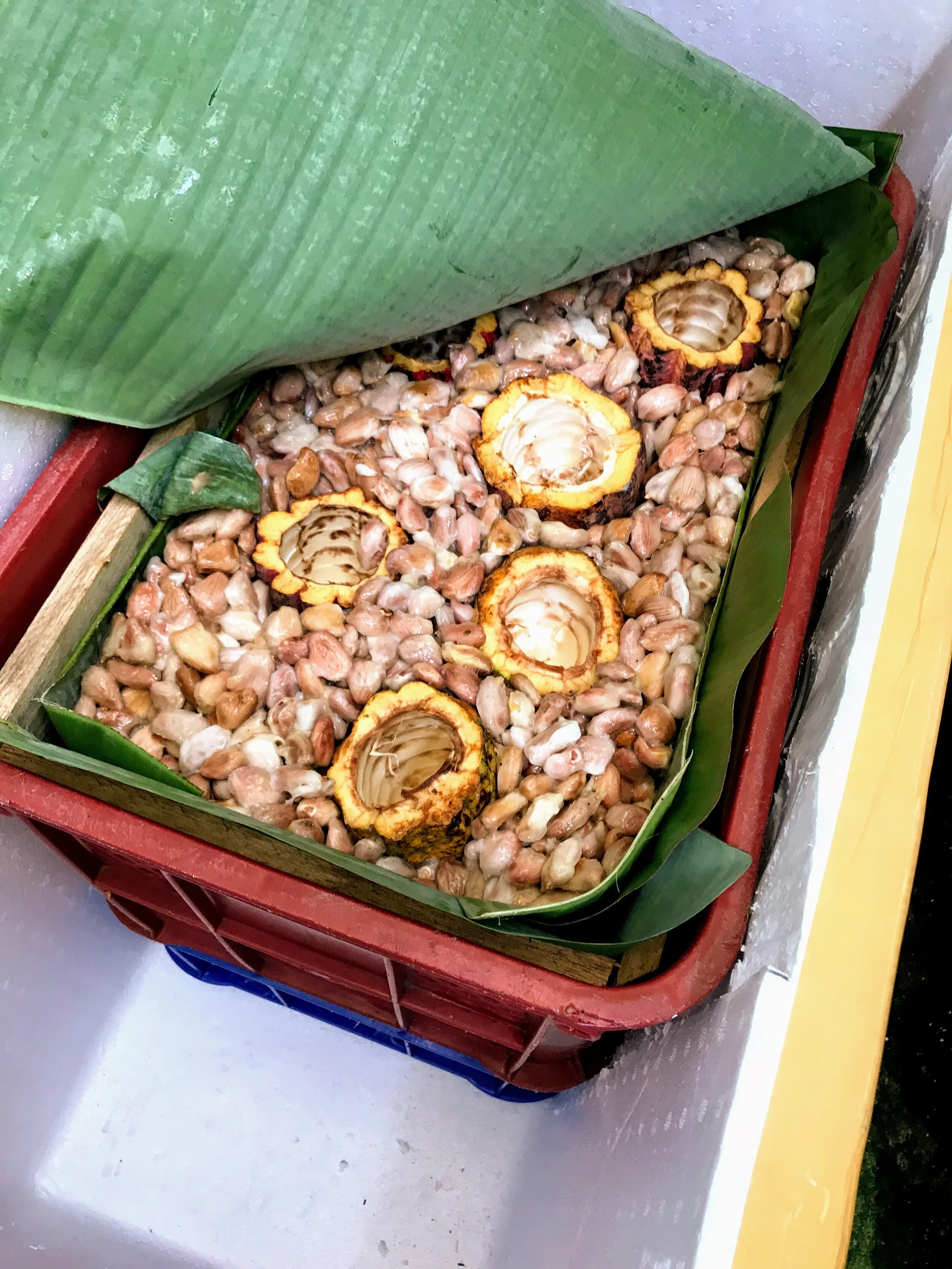
Empty pods were added to the ferment. Yeasts on the skin of the pods also help with fermentation. The fermentation container was placed inside a styrofoam box.

A temperature probe monitored the generated heat during fermentation. A temperature controller turns a bulb on when temperature inside the box drops below 110°F.

We followed a 2-1-1-1 fermentation protocol which means that the beans were exposed to oxygen only after the first two days; then mixed daily thereafter until fully fermented.
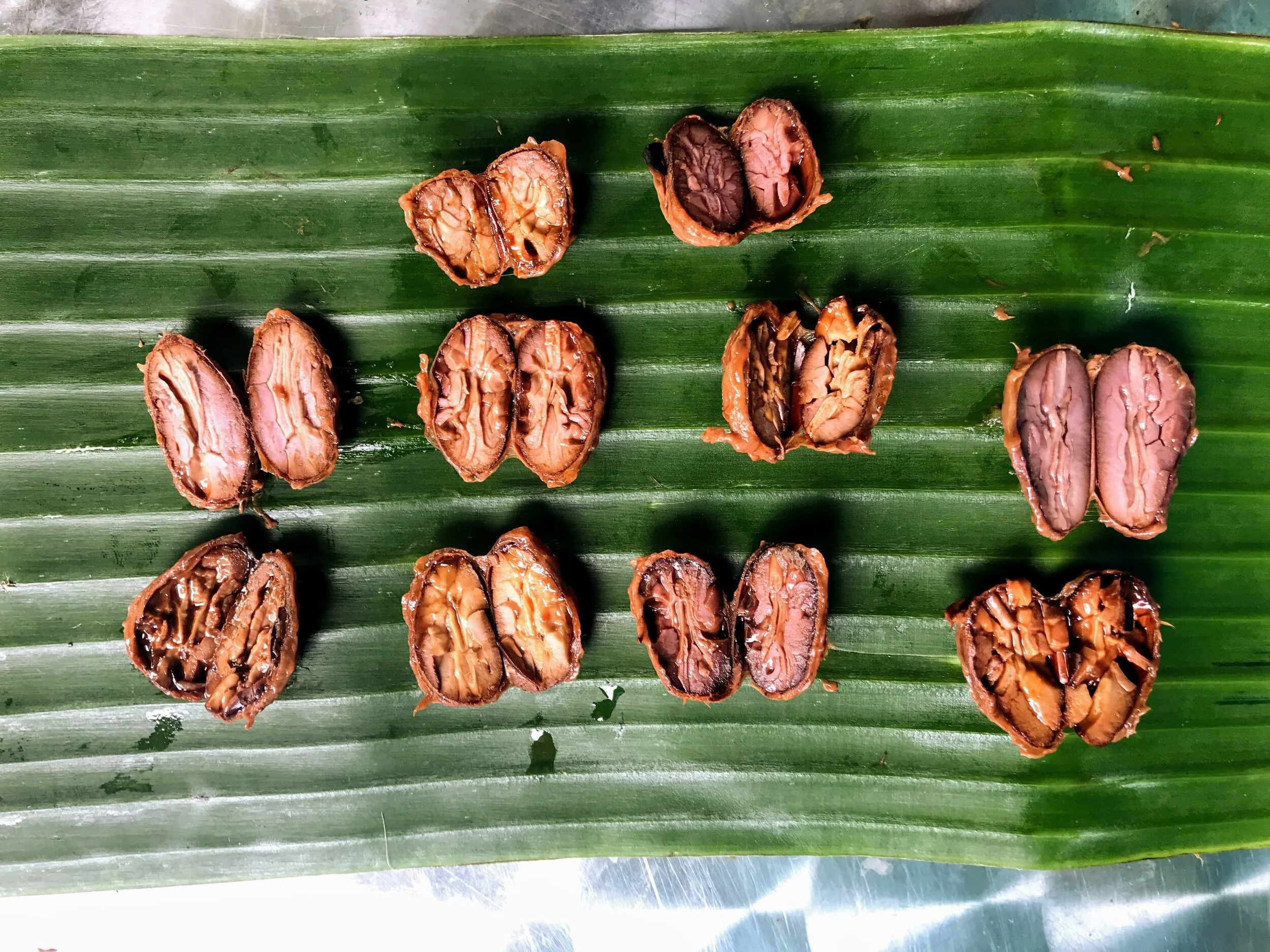
Cut tests were performed daily starting on day 5 until day 8. Starting day 5 a quarter of the beans were removed from the ferment and placed in the solar dryer.

Our solar dryer is a temporary setup covered with UV plastic. Even during the cold and rainy weather, temperature inside can go up to 120°F or 49°C.

The beans were placed in plastic trays and mixed several days during the day.
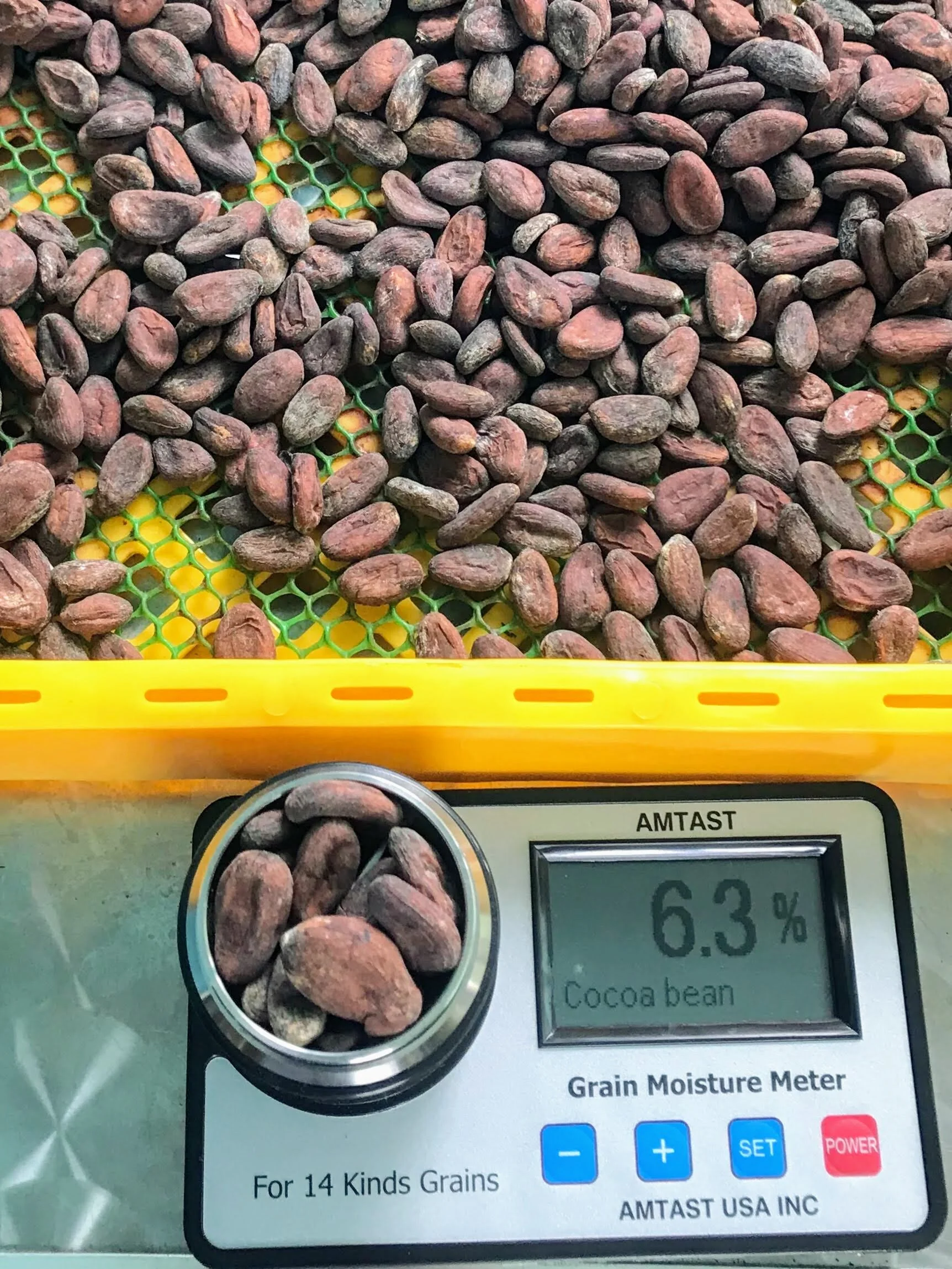
A moisture meter was used to determine if the beans were sufficiently dry. We went for a final moisture content of 6%.
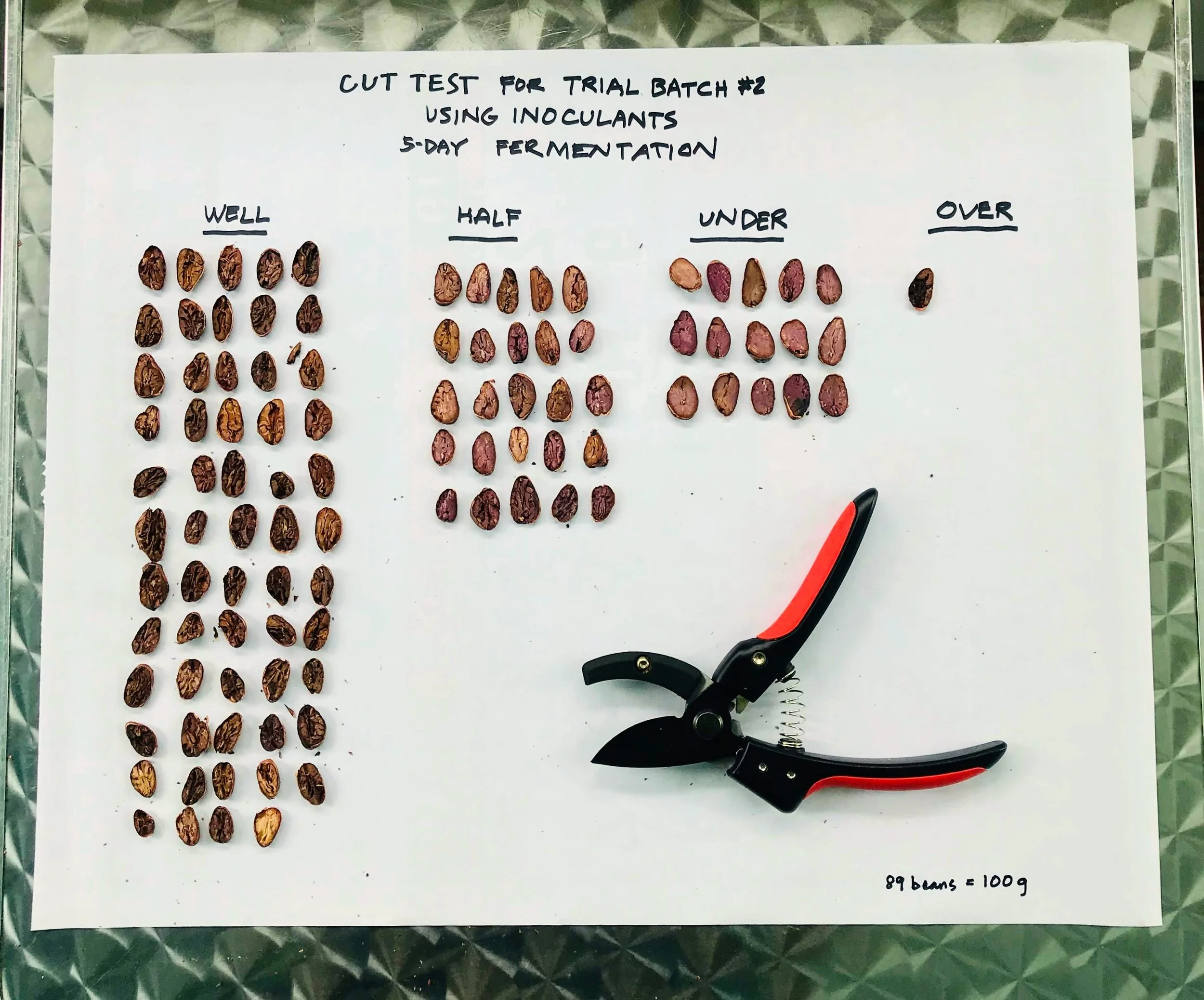
A 100 bean count cut test was done for each fermentation batch.

Each batch of fermented and dried beans was roasted, cracked, winnowed, ground, refined, tempered and molded into chocolate bar for tasting.

